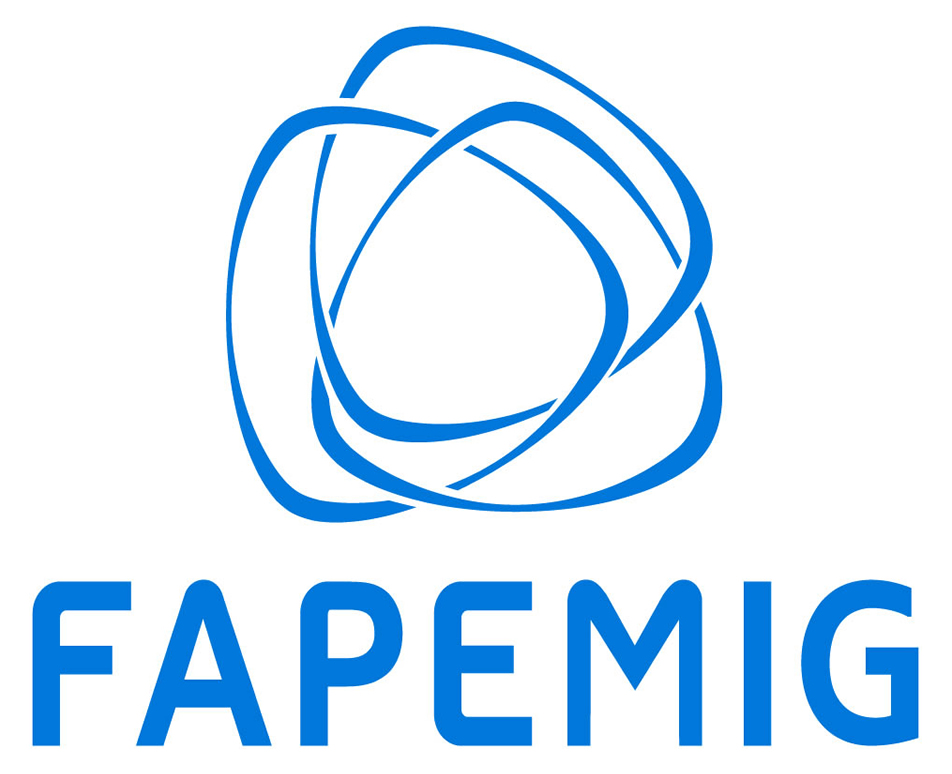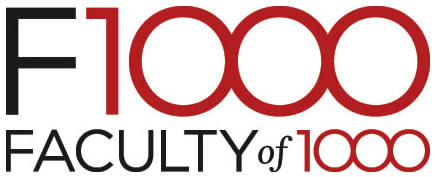Posters
| Category 'O'- Sequence Analysis' |
| Poster - O01 |
| Identification and characterization of conserved microRNAs in the parasite Schistosoma haematobium |
| Matheus de Souza Gomes, Federal University of Uberlandia, Brazil |
| Laurence Rodrigues do Amaral, Federal University of Uberlandia, Brazil Roberta Verciano Pereira, Federal University of Ouro Preto, Brazil Renata Guerra de Sá Cota, Federal University of Ouro Preto, Brazil Enyara Rezende de Morais, Federal University of Uberlandia, Brazil |
| Short Abstract: microRNAs are non-coding RNAs which can elicit post-transcriptional repression of genes. In this study, using a computational approach we identified several miRNAs in the Schistosoma haematobium genome. Given the important roles of miRNAs, the identification of miRNAs in S.haematobium will facilitate approaches towards prevention and treatment of Schistosomiasis. |
| Poster - O02 |
| Using coevolution to improve protein subfamily classification |
| Franco Simonetti, Fundación Instituto Leloir, Argentina |
| Martin Banchero, Fundación Instituto Leloir, Argentina Ariel Berenstein, Fundación Instituto Leloir, Argentina Ariel Chernomoretz, Fundación Instituto Leloir, Argentina Cristina Marino-Buslje, Fundación Instituto Leloir, Argentina |
| Short Abstract: Current subfamily classification methods usually integrate data such as protein sequence similarity and residue conservation within groups. However, results usually predict a great number of subfamilies with few members and little biological meaning. We propose to integrate covariation information into existing approaches to improve protein subfamily classification |
| Poster - O03 |
| High performance of genome assembly Corynebacterium pseudotuberculosis Cp31 with HiQ enzyme |
| Adonney Veras, Federal University of Pará, Brazil |
| Adonney Veras, Federal University of Pará, Brazil Pablo de Sá, Federal University of Pará, Brazil Leonardo Varuzza, Life Technologies, Brazil Rommel Ramos, Federal University of Pará, Brazil Artur Silva, Federal University of Pará, Brazil |
| Short Abstract: High performance of genome assembly Corynebacterium pseudotuberculosis Cp31 with HiQ enzyme |
| Poster - O04 |
| DNA sequences do have a mathematical structure, and ancient DNA sequence can be revealed by error-correcting codes |
| Marcelo Brandão, University of Campinas, Brazil |
| Larissa Spoladore, ESALQ / USP, Brazil Luzinete Faria, University of Campinas, Brazil Andréa Rocha, University of Campinas, Brazil Marcio Silva-Filho, ESALQ / USP, Brazil Reginaldo Palazzo, University of Campinas, Brazil |
| Short Abstract: Biological and digital communication systems have similarities with respect to the corresponding procedures used to convey the biological and digital information from one point to another, as well as in the data storage of digital media in a redundant array of independent disks (RAID) and the storage of genetic information in chromosomes. These similarities enable the use of algorithms in the modeling and analyses of biological systems and data. For instance, in eukaryotic cells, the information contained in the DNA is transmitted through RNA to produce the proteins needed at a precise moment and in specific compartments in the cell. Many enzymes and complex molecules coordinate their transport and are often assisted by protein intermediates in the cytosol and organellar membranes, thus identifying the correct location of a protein. In the same way, the transmission of flawless data through noisy channels in digital communication systems can be reliably achieved if, in addition to using an error-correcting code (ECC), extensive signal processing techniques are also employed. When an underlying BCH code over Galois ring extension and/or Galois field extension identifies a given DNA sequence, two things may occur: 1) the given DNA sequence is a codeword of a G-linear code; or 2) it is a sequence belonging to the set of neighboring sequences differing by one nucleotide from the corresponding codeword of a G-linear code. When the DNA sequence generation algorithm identifies a DNA sequence belonging to the cloud of a codeword, it may differ in a single nucleotide from the original sequence. Similar to biological DNA, this generated codeword may represent a silent mutation or it may cause a residue change. Furthermore, the single nucleotide alteration can be restored, or equivalently, the codeword can be reverse engineered, returning it to its original sequence by applying decoding algorithms. The proposal of mathematical models describing such biological systems provides the needed tools for the development of systematic approaches for studies of mutations and polymorphisms and has applications in genetic engineering. In the present study, a DNA Sequence Generator Algorithm was employed to evaluate whether the nucleotide difference between the original DNA sequence and the sequence identified as the codeword of the ECC is biologically significant in terms of evolution. Code-generated sequences were analyzed with Blastx, and residue mutation could be found in the same position in sequences of distantly related taxa. Bayesian analysis and divergence time calculation for code-generated for the Arabidopsis thaliana malate dehydrogenase gene indicates that the MDH code-generated sequence node has diverged approximately 1 Mya before A. thaliana paralogous sequences. We also found code-generated sequences in which the ECC-code would not implicate in changes of amino acids in deviant genomes that went through codon reassignment. The DNA Sequence Generation Algorithm could be describing plesiomorphic DNA sequences, as the suggested single nucleotide alteration often occurs in distant taxa and would be found in alternative codon patterns of nonstandard genetic codes. The algorithm could underlie any stage in information transmission, meaning an earlier stage of the evolution of the standard code. |
| Poster - O05 |
| Analysis of conserved motifs in the 3’ UTR of Trypanosoma cruzi amastin mRNAs |
| Taís Caroline Silva, University of Minas Gerais, Brazil |
| Rondon Mendonça Neto, University of Minas Gerais, Brazil Letícia Pérez, University of Minas Gerais, Uruguay |
| Short Abstract: Trypanosomatids are unicellular eukaryotes many of which are parasites responsible for human diseases. Amastins are Trypanosoma cruzi surface glycoproteins whose mRNA present significant changes in transcript levels during the parasite life cycle, to identify cis-acting elements controlling amastin mRNA abundance, development tools for the analysis in silico these elements present in the 3’UTR. |
| Poster - O06 |
| Bioinformatics Approaches for Soybean Mirtron Identification |
| Valéria Lopes-Caitar, Federal University of Technology, Brazil |
| Lucas Panicio Caitar, Universidade Norte do Paraná, Brazil Francismar Corrêa Marcelino-Guimarães, Brazilian Agricultural Research Corporation's – EMBRAPA Soybean, Brazil Alexandre Rossi Paschoal, Brazilian Agricultural Research Corporation's – EMBRAPA Soybean, Brazil Alexandre Rossi Paschoal , Federal University of Technology, Brazil |
| Short Abstract: This study presents the soybean mirtron identification by two different approaches. 14 introns were identified as potential soybean mirtron candidates. The target prediction analyses, by psRNATarget software, resulted in 30 genes as mirtron candidate targets. Our results are the first contribution for soybean mirtron identification. |
| Poster - O07 |
| Presence of upATGs in the 5’ UT region of genes of mRNA: potential implications in the regulation of gene expression at translational level |
| Caio Argolo, Universidade Estadual de Santa Cruz, Brazil |
| Leandro Loguercio, Universidade Estadual de Santa Cruz, Brazil |
| Short Abstract: We investigated the influence of alternative AUGs in the 5' untranslated region of fungi mRNAs in regulating gene expression. In species with good sample coverage of the transcripts, the extent of the ORFs and location of their stop codons showed potential of interference in the translation of originally predicted proteins. |
| Poster - O08 |
| Detection of differentially expressed SNVs in miRNAs and their targets: preliminary results |
| Natasha Jorge, Instituto Nacional de Câncer, Brazil |
| Fabio Passetti, Instituto Nacional de Câncer, Brazil Carlos Gil Ferreira, Instituto Nacional de Câncer, Brazil |
| Short Abstract: MiRNAs modulates gene expression by binding mRNAs and variations in their sequences may alter its regulatory activity. We reanalyzed publicly available non-small cell lung cancer high throughput sequencing data and detected a variation on the EGFR gene that may affect the binding of two predicted miRNAs. |
| Poster - O09 |
| Complete genome sequence of Corynebacterium ulcerans 210931 |
| Leandro Benevides, Federal University of Minas Gerais, Brazil |
| Marcus Viana, Federal University of Minas Gerais, Brazil Diego Mariano, Federal University of Minas Gerais, Brazil Flávia Rocha, Federal University of Minas Gerais, Brazil Edson Folador, Federal University of Minas Gerais, Brazil Felipe Pereira, Federal University of Minas Gerais, Brazil Fernanda Dorella, Federal University of Minas Gerais, Brazil Alex Carvalho, Federal University of Minas Gerais, Brazil Carlos Leal, Federal University of Minas Gerais, Brazil Artur Silva, Federal University of Pará, Brazil Siomar Soares, Federal University of Minas Gerais, Brazil Henrique Figueiredo, Federal University of Minas Gerais, Brazil Vasco Azevedo, Federal University of Minas Gerais, Brazil Luis Guimarães, Federal University of Minas Gerais, Brazil |
| Short Abstract: The current study, we present the genome sequence of C. ulcerans strain 210931.The platform used to sequencing was Ion Torrent.The assembly were done using de novo strategy through software Mira by SIMBA interface.The contigs were automatically annotated using RAST, and the manual curation of the annotation was performed using Artemis. |
| Poster - O10 |
| Preliminary analysis of differentially expressed genes involved in meat tenderness in Angus and Nelore beef cattle |
| Luís Augusto Nagai, University of Campinas, Brazil |
| Paula Falcão, Embrapa Informática Agropecuária, Brazil Poliana Giachetto, Embrapa Informática Agropecuária, Brazil Adhemar Zerlotini, Embrapa Informática Agropecuária, Brazil Fernando Cardoso, Embrapa Pecuária Sul, Brazil |
| Short Abstract: We used the open-source tool EdgeR of the Bioconductor R package to identify differentially expressed genes in a cattle Illumina RNA-seq dataset. We used 150Gb of RNA-Seq data from 18 animals (10 from Angus and 8 from Nelore cattle), and compared the process of align trimmed reads and raw reads. |
Long Abstract: Click Here |
| Poster - O11 |
| Development of Biotechnological Tools for Detection of Pathogenic Agents, Potentially Used as a Biological Weapon. |
| Victor Giordano Dias, Instituto Nacional de Metrologia, Qualidade e Tecnologia, Brazil |
| Allan Azevedo-Martins, UFRJ, Brazil Bruce Budowle, University of North Texas Health Science, United States Rodrigo Moura-Neto, Instituto Nacional de Metrologia, Qualidade e Tecnologia, Brazil Rosane Silva, UFRJ, Brazil |
| Short Abstract: Bioterrorism actions use biologic agents to promote epidemics, panic and overload health systems. This study aims the establishment of an efficient protocol to detect microorganisms with potential use as biological weapon. 16S rRNA and shotgun libraries from a soil sample were obtained and presented mapped reads to pathogens genomes. |
| Poster - O12 |
| GC bias versus sequencing platforms: hypothesis and ways to evaluate, using Corynebacterium pseudotuberculosis as model |
| Kenny Pinheiro, Federal University of Pará, Brazil |
| Kenny Pinheiro, Federal University of Pará, Brazil Pablo de Sá, Federal University of Pará, Brazil Adonney Veras, Federal University of Pará, Brazil Vasco Azevedo, Federal University of Minas Gerais, Brazil Artur Silva, Federal University of Pará, Brazil Rommel Ramos, Federal University of Pará, Brazil |
| Short Abstract: This paper proposes the use of Pearson's Correlation Coefficient (r) to analyze the correlation between GC content and coverage, allowing to identify the strength of linear correlation and detect nonlinear associations, beyond identify a relationship between GC bias and sequencing platforms. |
| Poster - O13 |
| Assessing the evolution of picornavirus capsid proteins using structural analysis and decomposition of residue correlation networks |
| Lucas de Oliveira, Universidade Federal de Minas Gerais, Brazil |
| Lucas Bleicher, Universidade Federal de Minas Gerais, Brazil Nilson Nicolau Jr, Universidade Federal de Uberlândia, Brazil |
| Short Abstract: The picornavirus capsid protein family is currently annotated in PFAM as a weak alignment which probably includes subfamilies. We use decomposition of residue correlation networks to find sets of correlated residues which may be related to such subfamilies and map them to three-dimensional structures for further investigation. |
| Poster - O14 |
| Semi-Markov Condition Random Fields for Gene Prediction |
| Ígor Bonadio, University of São Paulo, Brazil |
| Alan Durham, University of São Paulo, Brazil |
| Short Abstract: We propose the development of a new implementation of a class of Conditional Random Field called Semi-Markov Conditional Random Field that is an extension of our probabilistic framework called ToPS. ). ToPS is a modular computational framework which helps researches to model, to combine and to experiment probabilistic models. |
| Poster - O15 |
| WHOLE GENOME SEQUENCING AND SNP GENOTYPING OF CONTRASTING SIBLINGS ASSOCIATED TO MEALY FRUIT IN SEGREGATING POPULATION OF Prunus persica |
| Paula Vizoso, Universidad Andres Bello, Chile |
| Claudio Meneses, Universidad Andres Bello, Chile Ariel Orellana, Universidad Andres Bello, Chile |
| Short Abstract: In order to investigate the genetic basis of physiological mealliness phenotype, we present phenotypic evaluation and preliminary results of genome sequencing of individuals from segregating population of self cross ‘Venus’ variety. Comparison of genomic sequences from different individuals resulted choice of High quality polymorfisms. |
| Poster - O16 |
| Identification of miRNAs induced by viral infection in sand flies |
| Karla Oliveira, Universidade Federal de Minas Gerais / Instuto de Ci, Brazil |
| Flávia Ferreira, Universidade Federal de Minas Gerais, Brazil Roenick Olmo, Universidade Federal de Minas Gerais, Brazil Eric Aguiar, Universidade Federal de Minas Gerais, Brazil Jean-Luc Imler, Université de Strasbourg , France João Marques , Universidade Federal de Minas Gerais, Brazil |
| Short Abstract: In summary, this work has been being developed through Bioinformatics approaches to answer how an important virus called VSV (which prevalence is about 90% in rural areas in Panama) interacts with its vector. This knowledge might let us use control the transmission of this virus and change epidemiological numbers. |
| Poster - O17 |
| The small RNA transcriptome during the life cycle of Trypanosoma cruzi |
| André Aquime Gonçalves, Universidade Federal de Minas Gerais, Brazil |
| Zamira G. Soares, Universidade Federal de Minas Gerais, Brazil Romina B. Martin, Universidade Federal de Minas Gerais, Brazil Santuza M. R. Teixeira, Universidade Federal de Minas Gerais, Brazil Glória R. Franco, Universidade Federal de Minas Gerais, Brazil Daniella C. Bartholomeu, Universidade Federal de Minas Gerais, Brazil Eric A. Miska, University of cambridge, João T. Marques, Universidade Federal de Minas Gerais, Brazil |
| Short Abstract: The RNAi is characterized by presence Ago protein and small RNAs and T. cruzi have these molecules. Most smallRNAs in T. cruzi is derived from tRNA with 33 nt size. In different T. cruzi forms we find same 5 tRNAs expressed. Indicating some functions these small RNAs from tRNAs. |
| Poster - O18 |
| The impact of quality filter for RNA-Seq based reference over differential gene expression for prokaryotes |
| Pablo de Sá, Federal University of Pará, Brazil |
| Pablo de Sá, Federal University of Pará, Brazil Adonney Veras, Federal University of Pará, Brazil Adriana Carneiro, Federal University of Pará, Brazil Kenny Pinheiro, Federal University of Pará, Brazil Anne Pinto, Federal University of Minas Gerais, Brazil Siomar Soares, Federal University of Minas Gerais, Brazil Maria Schneider, Federal University of Pará, Brazil Vasco Azevedo, Federal University of Minas Gerais, Brazil Artur Silva, Federal University of Pará, Brazil Rommel Ramos, Federal University of Pará, Brazil |
| Short Abstract: The present study aims to analyze the impact of different quality filter values for Corynebacterium pseudotuberculosis and Kineococcus radiotolerans RNA-Seq data. |
| Poster - O19 |
| Clustering epitopes in groups based on it’s protein family |
| Edgar gonzalez kozlova, Universidade Federal de Minas Gerais, Brazil |
| Benjamin Viart, UFMG, Brazil Ricardo Machado de Avila, Universidade do Extremo Sul Catarinense, Brazil Liza Felicori, UFMG, Brazil Carlos Chavez-Olortegui, UFMG, Brazil |
| Short Abstract: None On File |
| Poster - O20 |
| Feature extraction from complex networks: A case of study in genomic sequences classification |
| Bruno Conque, Federal University of Technology - Paraná, Brazil |
| Fabricio Lopes Federal University of Technology - Paraná, Brazil Andre Kashiwabara, UTFPR, Brazil Fabricio Lopes, UTFPR, Brazil |
| Short Abstract: None On File |
| Poster - O21 |
| MaLe-PSI-BLAST, a tool for generating and inspecting clusters of putatively homologous proteins based on Machine Learning optimized PSI-BLAST |
| J Miguel Ortega, Universidade Federal de Minas Gerais, Brazil |
| Henrique Ribeiro, UFMG, Brazil Tetsu Sakamoto, UFMG, Brazil Henrique Velloso, UFMG, Brazil |
| Short Abstract: None On File |
| Poster - O22 |
| SncSeq: an automated pipeline for analyzing small non-coding RNA high throughput sequencing data |
| Natasha Jorge, Instituto Nacional de Câncer, Brazil |
| Fabio Passetti Instituto Nacional de Câncer, Brazil Gabriel Wajnberg, Instituto Nacional de Câncer, Brazil Benilton Carvalho, State University of Campinas, Brazil Carlos Ferreira, Instituto Nacional de Câncer, Brazil Fabio Passetti, Instituto Nacional de Câncer, Brazil |
| Short Abstract: None On File |
Posters
Poster Presentation List & Schedule
Odd numbers:
Poster set up: Day 1 - all day long
Take down: Day 2 after Poster Session
Size: Up to 90cm width x 120 cm height
Even Numbers:
Poster set up: Day 2 after Poster session and Day 3 until the first coffee break
Take Down: Day 3 after Poster Session
Size: Up to 90cm width x 120 cm height
| View Posters By Category |
- A) Bioinformatics of Disease and Treatment
- B) Bioinformatic tools and databases
- C) Computational aspects
- D) Comparative Genomics
- E) Education
- F) Epigenetics
- G) Functional Genomics
- H) Genome Organization and Annotation
- I) Genetic Variation Analysis
- J) Metagenomics
- K) Pathogen informatics
- L) Population Genetics Variation and Evolution
- M) Protein Structure and Function Prediction and Analysis
- N) Proteomics
- O) Sequence Analysis
- P) Systems Biology and Networks
- Q) Other
| Search Posters: |
TOP






